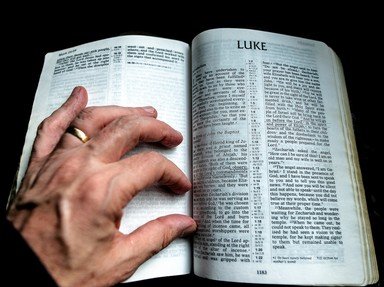Quiz Answer Key and Fun Facts
1. Luke does not offer any autobiographical detail but, on the basis of other New Testament passages, which occupation is usually ascribed to him?
2. The narrative in Luke's gospel begins and ends in the same place. Where?
3. Luke, like Matthew, gives an account of the birth of Jesus. Who does he say was Roman emperor at this time?
4. In keeping with Mark and Matthew, Luke introduces the story of John the Baptist's ministry with a quote from Isaiah. He does, however, extend the quotation to include two verses not used by the other gospel writers. Why does he do this?
5. Unlike Mark and Matthew, Luke records another quotation from Isaiah, which Jesus reads aloud at the beginning of his public ministry. How does this passage begin?
6. On one occasion, Jesus had his feet kissed and perfumed by a woman known for her sinful past. According to Luke, whose house was he in at the time?
7. One of Jesus' most famous parables is found in Luke and tells the story of a violent robbery. Help comes from an unexpected source. Who is the hero of this parable?
8. At the beginning of chapter 8, Luke provides some detail about those that travelled with Jesus. What is unusual about this list?
9. Luke's account of the preparation for the Passover meal sounds like something from a spy novel. Peter and John were asked to go and make preparation but weren't told where the meal was to take place. Their instructions were to go into Jerusalem, where they would see a man whom they were to follow. How would they identify this man?
10. After Jesus' resurrection, he appeared to two disciples who were travelling home from Jerusalem. What was their destination?
Source: Author
glendathecat
This quiz was reviewed by FunTrivia editor
CellarDoor before going online.
Any errors found in FunTrivia content are routinely corrected through our feedback system.

